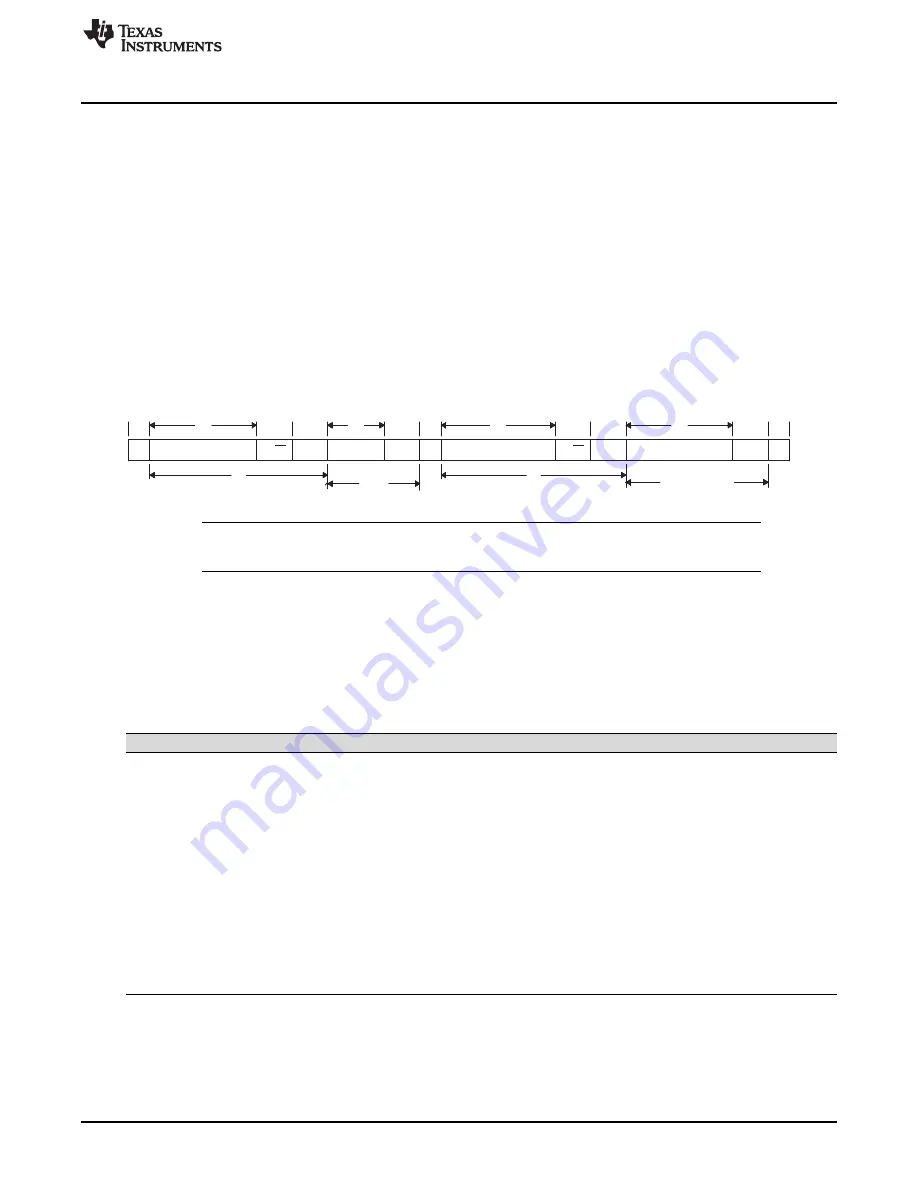
1
7
n
7
n
1
1
1
1
1
1
1
1
S
Slave address
R/W ACK
Data
ACK
S
Slave address
R/W
ACK
Data
ACK
P
1
Any
number
1
Any number
I2C Module Operational Details
1015
SPRUH22I – April 2012 – Revised November 2019
Copyright © 2012–2019, Texas Instruments Incorporated
C28 Inter-Integrated Circuit Module
14.2.5.3 Free Data Format
In this format (see
), the first byte after a START condition (S) is a data byte. An ACK bit is
inserted after each data byte, which can be from 1 to 8 bits, depending on the BC field of I2CMDR. No
address or data-direction bit is sent. Therefore, the transmitter and the receiver must both support the free
data format, and the direction of the data must be constant throughout the transfer.
To select the free data format, write 1 to the free data format (FDF) bit of I2CMDR. The free data format is
not supported in the digital loopback mode (DLB = 1 in I2CMDR).
14.2.5.4 Using a Repeated START Condition
At the end of each data byte, the master can drive another START condition. Using this capability, a
master can communicate with multiple slave addresses without having to give up control of the bus by
driving a STOP condition. The length of a data byte can be from 1 to 8 bits and is selected with the BC
field of I2CMDR. The repeated START condition can be used with the 7-bit addressing, 10-bit addressing,
and free data formats.
shows a repeated START condition in the 7-bit addressing format.
Figure 14-10. Repeated START Condition (in This Case, 7-Bit Addressing Format)
NOTE:
In
, n = the number of data bits (from 1 to 8) specified by the bit count (BC) field
of I2CMDR.
14.2.6 NACK Bit Generation
When the I2C module is a receiver (master or slave), it can acknowledge or ignore bits sent by the
transmitter. To ignore any new bits, the I2C module must send a no-acknowledge (NACK) bit during the
acknowledge cycle on the bus.
summarizes the various ways you can tell the I2C module to
send a NACK bit.
Table 14-2. Ways to Generate a NACK Bit
I2C Module Condition
NACK Bit Generation Options
Slave-receiver modes
• Allow an overrun condition (RSFULL = 1 in I2CSTR)
• Reset the module (IRS = 0 in I2CMDR)
• Set the NACKMOD bit of I2CMDR before the rising edge of the last data bit you
intend to receive
Master-receiver mode AND
Repeat mode (RM = 1 in I2CMDR)
• Generate a STOP condition (STP = 1 in I2CMDR)
• Reset the module (IRS = 0 in I2CMDR)
• Set the NACKMOD bit of I2CMDR before the rising edge of the last data bit you
intend to receive
Master-receiver mode AND
Nonrepeat mode
(RM = 0 in I2CMDR)
• If STP = 1 in I2CMDR, allow the internal data counter to count down to 0 and thus
force a STOP condition
• If STP = 0, make STP = 1 to generate a STOP condition
• Reset the module (IRS = 0 in I2CMDR). = 1 to generate a STOP condition
• Set the NACKMOD bit of I2CMDR before the rising edge of the last data bit you
intend to receive















































